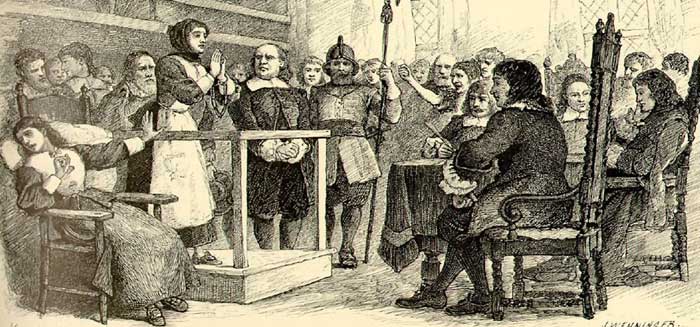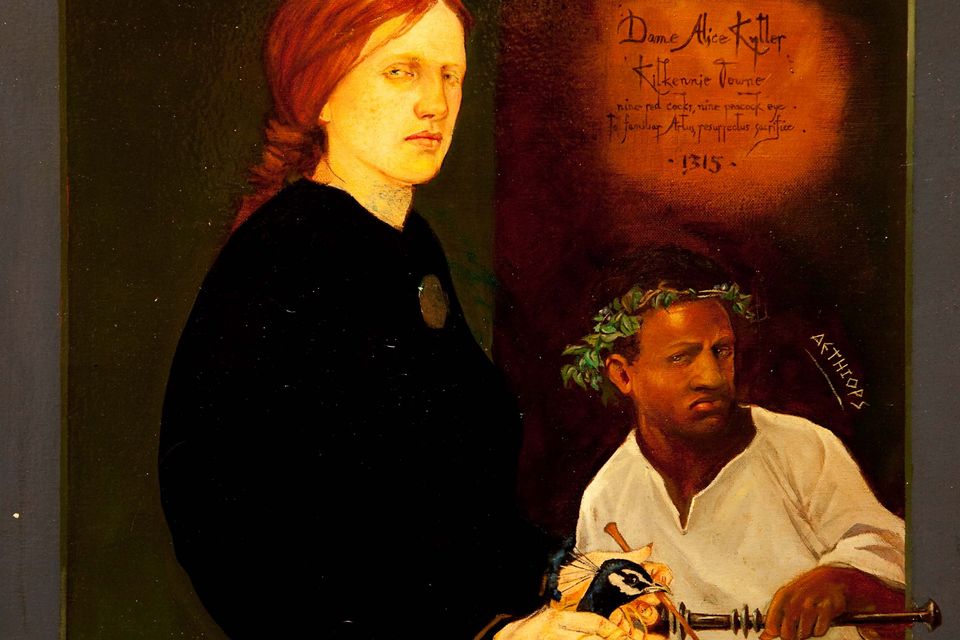Many that have taken history classes know of the Salem Witch trials. This part of history is vaguely covered. It is known that individuals were being accused of participating in witchcraft, but the underlying details of these cases are not discussed in most basic history classes. This part of history is important to cover because is it significant for those to realize that most of these cases were not individuals participating in witchcraft. Rather it was those who were suffering due to their environment and they did not receive any help. The source that I will be introducing into the museum will be a specific case that was recorded in Massachusetts in 1692.

The Salem Witch Trial of Nehemiah Abbott Jr.
From this examination, we can see how Abbott Jr. was being accused of hurting multiple women while engaging in witchcraft. These women claimed that Abbott had a “bunch on his eyes” which is what stuck out to them. They swore that it was Abbott while he was swearing his innocence before God. Each of these women truly believed and were confident that Abbott was the man who attacked them while not having a clear view of him. Abbott was then brought closer to the women’s view, and this is when they were unsure if it was him. The women claimed that it looked like him but could not be exactly sure after having a clear view of him. Due to the lack of certainty, the case was dismissed.
During this time period, many of the accused were wrongfully convicted. Those were the ones who dealt with time in jail, were beaten, and even killed. “Does Nehemiah Abbott Jr., who was arrested but released by the local magistrates, really count as a case? Yes, it was an accusation, yet the Court of Oyer and Terminer was never presented with formal charges against him. Calling his story a case suggests a parallel weight to the others that it may not deserve. Counting everyone accused of witchcraft, even in passing, as a case produces numbers that are deceptive because this practice fails to make distinctions about how far the accusations went in the judicial system: not all were pursued by the magistrates” (Burns Et Al. 407) [1]. This quote from a secondary source covers the records of the Salem Witch Trials. It discusses the Nehemiah Abbott Jr. case. One mistake that occurred during this time period was that each accusation had an examination that was recorded and it counted the same as if it was a full-blown witchcraft case despite it never going in front of a judge.
This is one of the many injustices that should be covered when discussing the Salem Witch Trials because these individuals were rarely ever given a fair chance. It is not fair to count an accusation as a case when it never reached a judge. It should not have been considered a case for Nehemiah as well, especially because it was dropped. He should not have been recorded as engaging in witchcraft when there was not enough evidence to prove that he was guilty for that. “…over the years has been described as Black or mixed race, though court records from her trial refer to her as “Tituba Indian” (Howe 2014, 131). The ubiquitous figure of the spectral “black man” in the Salem trials — which has antecedents that stretch back to Alice Kyteler’s incubus in 1324–fuses epidermal race, indigeneity, and demonic possession”(Finke 242). [3]

Above is a picture of Alice Kyteler
This quote is very important when discussing the injustices of the Salem Witch Trials. This quote may seem as if it can only apply to one case when it actually speaks about the broader issues that occurred during this time. Witchcraft was deeply rooted in fear of spirituality. “Black man” was meant to describe a devilish and demonic figure. This term started to be intertwined with black meaning the race. When they speak about Tituba Indian, this is the process of listing one’s race and ethnicity in the records which resulted in much prejudice and discrimination. Back in this time period, those who were Indigenous and Black were seen as evil and demonic. Instead of “black” being seen as a devil figure that could apply to anyone in the world at the time, it tended to connect more to those who were of color as well as Indigenous individuals.
To tie this all together, the factors that could have caused these individuals to seem as if they were engaging in witchcraft should be discussed. “A historical forensic toxicological theory is the ‘visions’ that lead to accusations of witchcraft may have been the result of ergot-induced hallucinations… Use of chemical and biological agents in warfare and the diversity of environmental contamination ramped up in the 20th century” (Fitch 20). [2] This quote shows how the many individuals accused of witchcraft may have been acting differently because they could have been hallucinating. It is clear from this article by Fitch that there was much contamination in the water. Back in Rome, after much warfare, they salted the Earth to make it sterile, using chemicals to ensure that they wiped away all the evil. What they did not realize was that they were contaminating their land and infecting it. Examples like this is a good explanation for the behavior of those accused of witchcraft.
Many of these individuals were acting out of the norm and in many cases, some were blamed as an act of retaliation. This shows that these accusations could hold no weight and still result in one being treated unfairly. Though, we do not fully see this in the case of Abbott Jr. There are some injustices in the Abbott Jr. case seeing that he was wrongfully examined due to many women thinking who they seen was him when in fact it wasn’t. It was a bit unfair because it only went based on hearsay rather than any physical evidence. He was not labeled as Black in the records, but they did use physical descriptions to describe him such as with “bunch on his eyes”. A question that could be raised from this description is, was this something racial or just a physical thing on his eyes? It is also important to look at how his case was handled differently from others. The description of his eyes could be racial or just a physical thing but what would have happened if he was labeled as a Black man? He could have been tortured and held in prison. Although, it was noticed how there was a lack of certainty and evidence therefore, he was let go. It is also important to notice that these women’s accusations could have been a hallucination and not something real. Even the description of “bunch on his eyes” could have been something that was a hallucinatory thought. The hallucinations could have gotten them to create these accusations but change their mind once they got an actual close up visual of him, realizing that their hallucinations were not of him. Lastly, it is important to notice that these women could have been experience hallucinations or change of behavior due to environmental conditions. Therefore, each accusation should have been handled as such and not as a full-blown court case. This case is significant because it raises questions of what would have happened if Abbott Jr. was listed as a Black man or how would the Salem Witchcraft Trials have been different if the hazardous environmental conditions were known about?
Footnotes
1. Burns, Margo, and Bernard Rosenthal. “Examination of the Records of the Salem Witch Trials.” The William and Mary Quarterly 65, no. 3 (2008): 401–22.
2. Fitch, Eric J. “WHAT’S UP WITH WATER?: Carthage, the Salem Witch Trials and the Need to Reevaluate U.S. Commitments to Protect Public Health and the Environment.” Water Resources IMPACT 20, no. 4 (2018): 19–20.
3. Finke, Laurie A. “Black Magic: Race in the European Witch Trials.” Exemplaria 36, no. 3, (2024): 236-244
